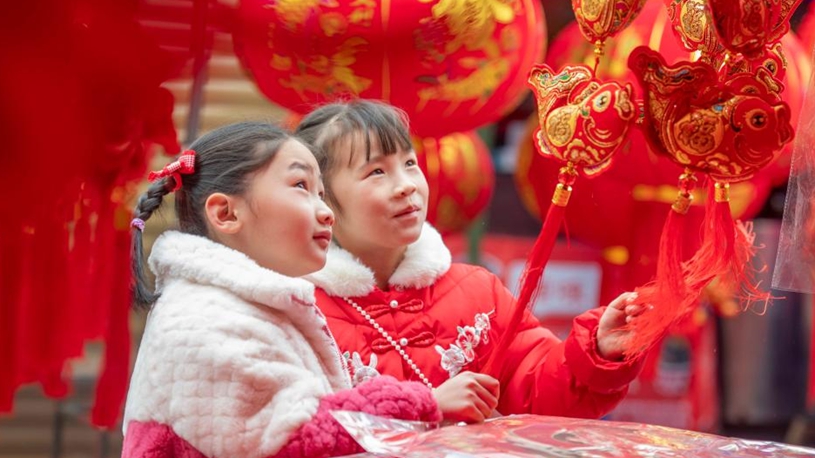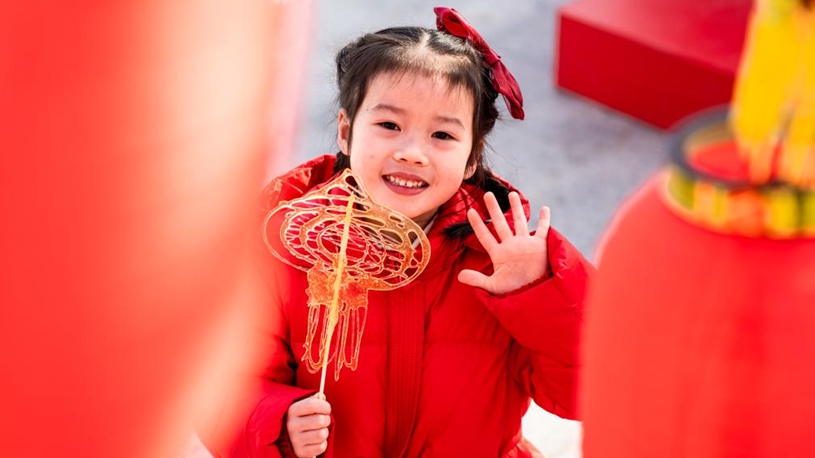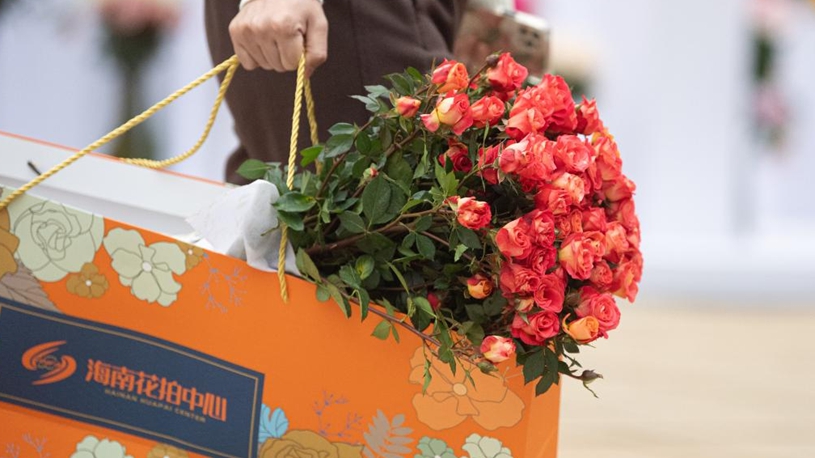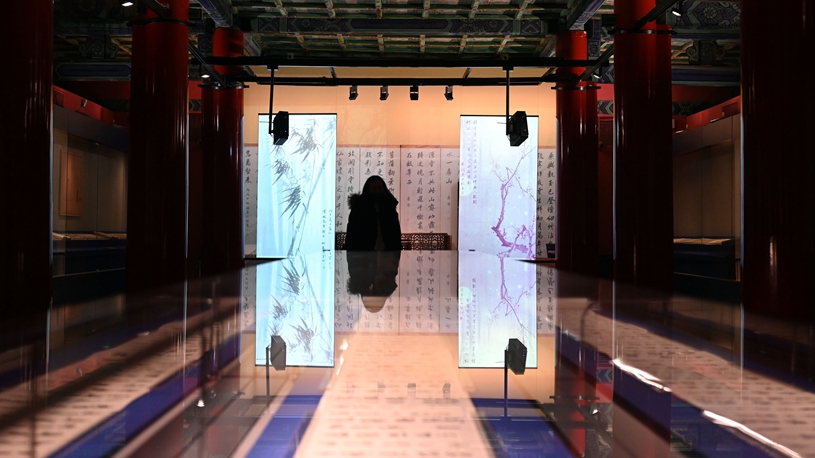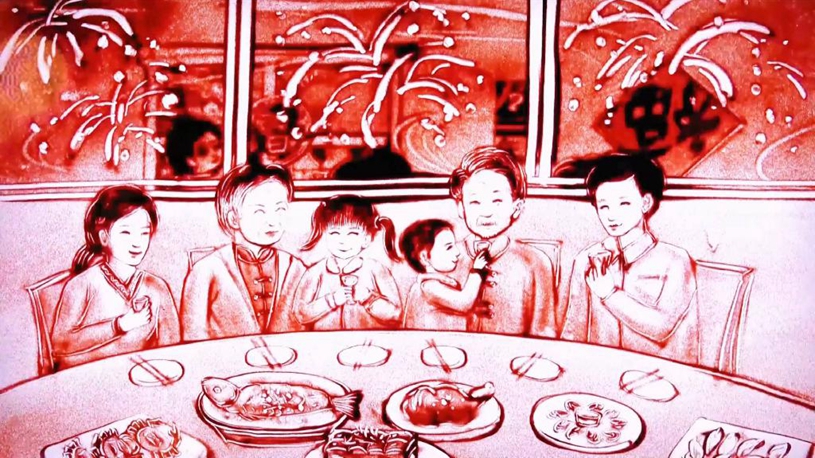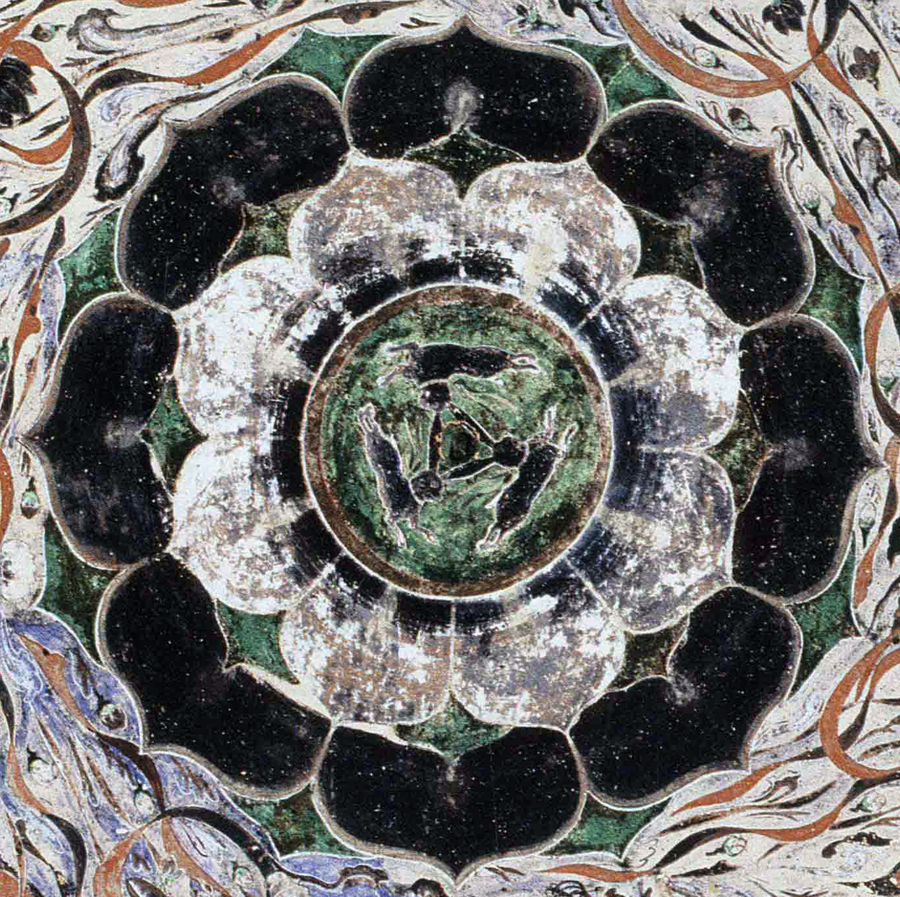
The picture shows a pattern of the three-rabbit symbol in Cave 407 of Mogao Grottoes, Dunhuang of Gansu Province, China. (Dunhuang Academy/Handout via Xinhua)
A rare image of three-rabbits, with each pair of adjacent rabbits sharing an ear and together forming three ears instead of six, and chasing with each other in a circle, were found in both China and other countries. Such an image were deemed as a symbol of cultural exchanges between China and other civilizations via the ancient Silk Road.
BEIJING/TEHRAN, Jan. 22 (Xinhua) -- As Chinese Lunar New Year, or the Year of the Rabbit, falls on Sunday, the images of rabbits were shown across the world and loved by people both in the East and West.
A rare image of three-rabbits, with each pair of adjacent rabbits sharing an ear and together forming three ears instead of six, and chasing with each other in a circle, were found in both China and other countries, historians said in recent interviews with Xinhua, adding that such an image were deemed as a symbol of cultural exchanges between China and other civilizations via the ancient Silk Road.
CHINA'S THREE-RABBIT IMAGE IN DUNHUANG
The images of three-rabbits, which appeared as early as the sixth century, were found in a total of 20 grottoes in Mogao Grottoes, a UNESCO World Heritage Site, in the Dunhuang city of China's northwestern Gansu Province, said Zhao Yanlin, a researcher with Dunhuang Academy.
They were later shown in the Middle Asia and West Asia between the 12th century and 13th century via Silk Road, and were found in Egypt and Europe between 13th century and 16th century, he said.
The images were also found in many ancient plates in Afghanistan, pottery in Egypt, church clocks in Germany and painted ceramic tiles in Britain, he added.
THREE-RABBIT IMAGE IN IRAN
The circular motif is very well known and appears on paintings and pictures either carved on coins, trays and metal objects or painted on clay dishes and tiles. It has been found in many parts of the world, including East Asia and the Middle East. In Iran, a tray of the Middle Ages was found with such symbol.
Kourosh Salehi, an Iranian historian and international affairs expert at the International University of Islamic Denominations, believes that the three-rabbit motif found on different artifacts in Iran reflects China's cultural impact on Iran.
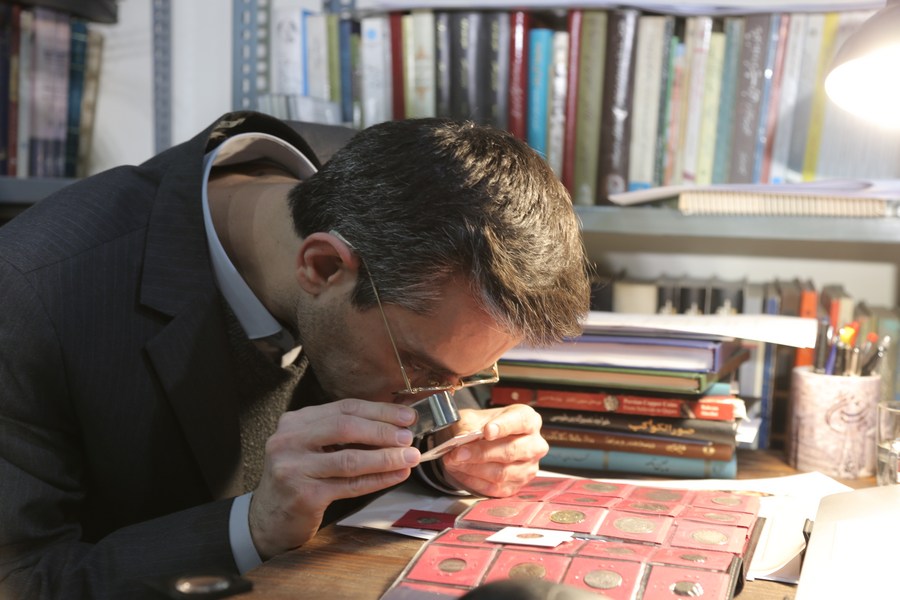
Kourosh Salehi, a historian and international affairs expert at the International University of Islamic Denominations, observes a coin with the rabbit symbol in Tehran, Iran, Jan. 17, 2023. (Xinhua/Gao Wencheng)
The historian said that the three-rabbit symbol found in Iran, as reflected on some metal artifacts and coins, was believed to be brought to Iran by Chinese artists and painters as it perfectly conforms to the ones seen on samples discovered in China in the ancient era, showing the Chinese cultural impact on Iranian culture during the Ilkhanate dynasty (1256-1353).
Among the distinctive features of the three-rabbit symbols in all the artifacts found in Iran so far is that the rabbits are pictured at the center of a round object chasing each other in a circle, which probably implies the continuation of the circle of life, fertility and death.
The ancient Silk Road led to cultural exchanges between China and Iran, leaving visible marks on today's Iranian cultural tradition, one of which being the 12-animal Zodiac, an Iranian historian said.
"Like in China, the upcoming new year in Iran, which will begin on March 22, is also the Year of the Rabbit," said Salehi. "What's interesting is that throughout the evolution process and history, the animals' concept has entered Iran's culture from China and East Asia."
"Iranians, in addition to naming and enumerating the years based on their ordinal numbers according to the Solar Hijri calendar, still say what animal each year represents." From the point of view of semiotics and mythology, Salehi said the rabbit symbolizes fertility, instability, swiftness, cleverness and social life.
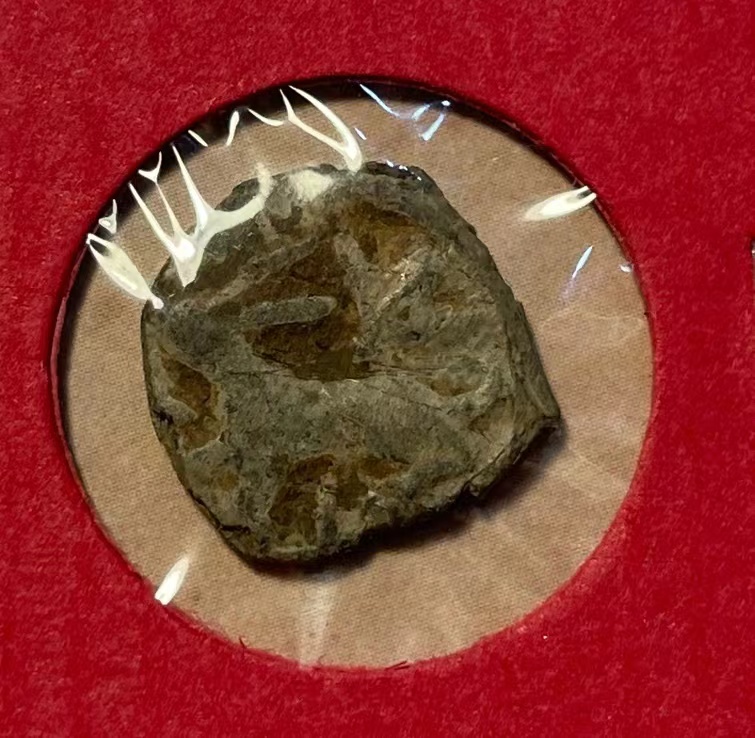 A coin with the rabbit symbol is pictured in Tehran, Iran, Jan. 17, 2023. (Xinhua/Gao Wencheng)
A coin with the rabbit symbol is pictured in Tehran, Iran, Jan. 17, 2023. (Xinhua/Gao Wencheng)
ANCIENT TURKISH 12-ANIMAL CALENDAR
Besides the three-rabbit image, other rabbit symbols also show cultural exchanges between China and other civilizations. The upcoming Year of the Rabbit according to the Chinese lunar calendar reminds Turks of one of their ancient rituals.
The 12-animal Turkish Calendar, derivated from the Chinese lunar calendar, also included the Year of the Rabbit during the ancient times when Turkish tribes widely practiced Shamanism, a religious practice.
Sergen Cirkin, a Turkish archaeologist, told Xinhua that some archaeological findings indicate that the 12-animal calendar was used about 3,200 years ago among Turkish tribes, such as the Scythians.
Turks, under Shamanism, perceived rabbits as spiritual animals acting as messengers and attributed rabbits a distinct value in stopping wars, struggling against evils, hunting and even giving birth to a child, he said.
"Furthermore, we find that the rabbit was a potent divine symbol for Turkish Shamanism, especially when giving birth. We see that an object made of rabbit fur was hanging in a tent where the birth takes place," Cirkin added.
He also noted that the rabbit symbolizes compassion and timidity.
The 12-animal calendar indicated how Chinese and Turkish cultures have intertwined since before Christ, Ahmet Tasagil, head of the History Department at the Istanbul-based Yeditepe University, told Xinhua.
"Qin Shihuang, the first emperor of a unified China reigned during 221 BC-210 BC, had a close relationship with the Northern tribes, who we call the Turkish tribes," explained Tasagil.
"As a result of such close ties, Turks adopted the version of the lunar calendar and called it the 12-animal Turkish calendar," he said.
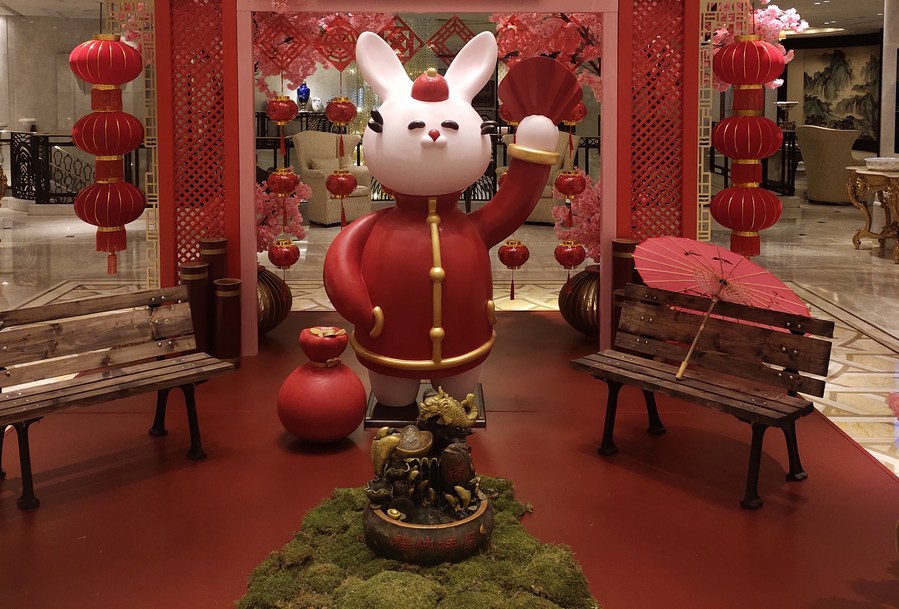
A rabbit-shaped decoration stands in a restaurant in Istanbul, Türkiye on Jan. 17, 2023, ahead of the upcoming Chinese New Year, the year of the Rabbit. (Xinhua photo)
RELATING TO GOD IN ANCIENT EGYPT
Observing the Chinese lunar New Year of Rabbit which begins on Sunday, Tarek Tawfik, vice president of the International Association of Egyptologists, said that rabbit, the luckiest of the 12 animals of the zodiac in Chinese culture, is also an important and special sign of the hieroglyphic in the ancient Egyptian language.
The Egyptology expert explained that wild rabbit resembles the verb Un or Wenin which means to be, to happen, and to continue, noting that Egyptians drew wild rabbits on their tombs because they admire its cleverness, speed, intelligent big eyes, and cautious long ears.
The professor added that the sign of rabbit was also associated with Osiris, one of Egypt's most important deities, who was the god of the underworld and symbolized death, resurrection, and the cycle of Nile floods that Egypt relied on for agricultural fertility.
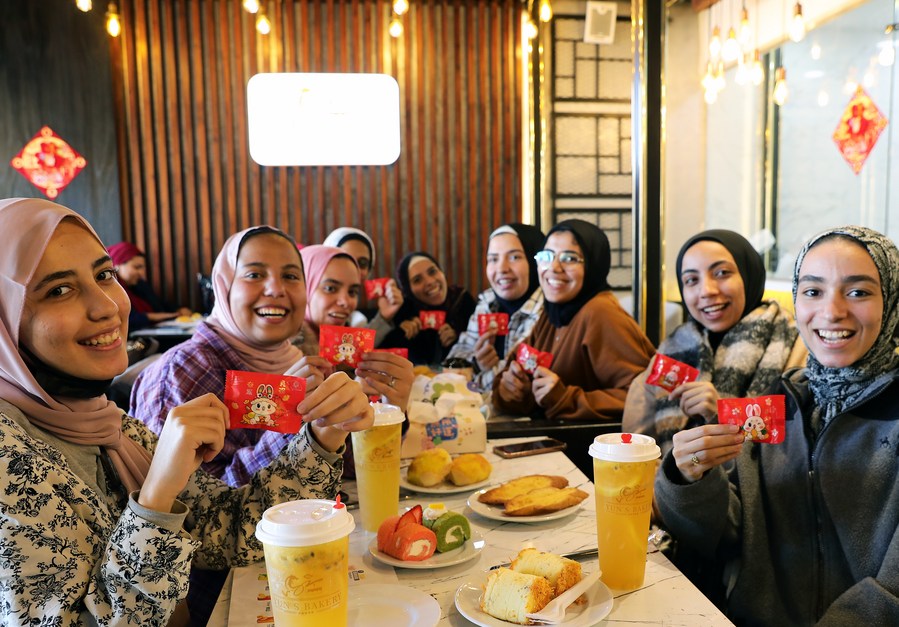
People gather at a bakery which is decorated for the upcoming Chinese Lunar New Year, the year of the Rabbit, in Cairo, Egypt, Jan. 18, 2023. (Xinhua/Wang Dongzhen)
Un-nefer, or Wenenu means that Osiris will appear after the resurrection in beautiful shape, Tawfik, also former director general of the Grand Egyptian Museum, added.
Egyptians also see rabbits as an animal that brings luck and good future. After buying a car for taxi, Mahmoud Samy, a 55-year-old doorman of a residential building in Maadi district in south-eastern Cairo, hung a necklace of plastic rabbit legs in his car to bring luck and good income.
"Rabbits are famous for their fertility and reproduction, which signifies more money and prevent accidents," he said.
Tawfik explained that both Egyptian and Chinese people believe in speediness and reproduction of rabbits as old civilizations, especially those founded on banks of big rivers like the River Nile in Egypt and the Yangtze River in China, are connected with similarity of nature, and trade relations, even with long distances, brought mutual interaction and influence. ■


